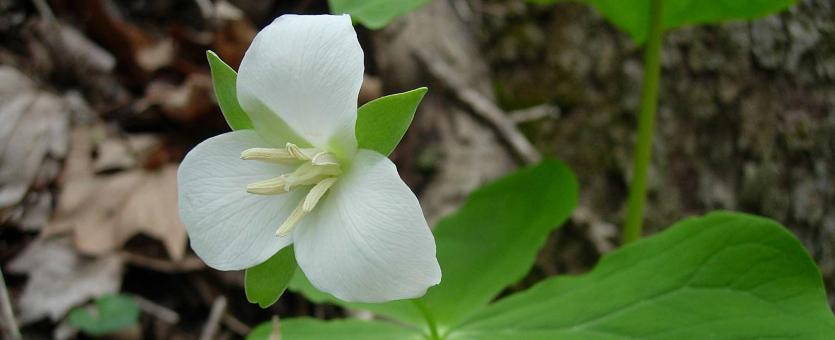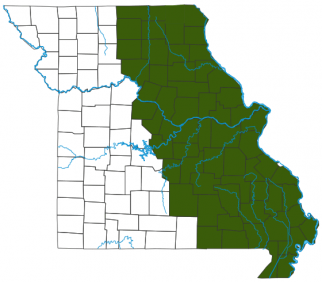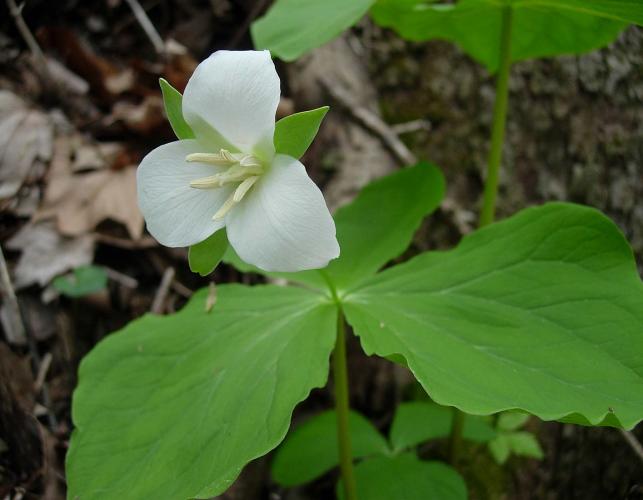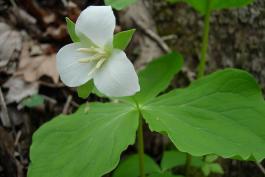
The large size and nodding or horizontally spreading flowers help to identify this trillium. Flowers large, triangular, with white petals; sepals 3, narrow, green. Flower to 2½ inches across on a stem, either horizontal or drooping when in bloom. Blooms April–May. Leaves 3, heart-shaped, pointed, large, in a whorl, usually as broad as long, to 9 inches long, green but not mottled.
There are 7 species of Trillium in Missouri. Snow or dwarf white trillium (T. nivale) is uncommon, mostly in northeast Missouri. It’s the smallest and earliest-blooming trillium in our state and often forms colonies. Green trillium (T. viridescens) lives mostly in the southwestern Ozarks and has green or yellowish-green petals, sometimes with a purplish tinge.
Height: to 2 feet. This is the largest trillium in Missouri.

Scattered in eastern and east-central Missouri. Look for it in our eastern counties and in counties bordering the Missouri River.
Habitat and Conservation
Occurs on rich, wooded slopes and in bottomland forests, generally on east- or north-facing hills, and along streams, bottoms, and lower slopes of valleys and ravines. Trilliums are popular in shade gardens but are difficult to grow from seed. This has led to unethical collecting from the wild. However, many plants do not survive transplanting. Please be aware of the sources for your plants, and insist on nursery-grown plants from cultivated stocks.
Status
In addition to “white trillium” and “white wake robin,” this plant is also called “drooping trillium,” which reflects the meaning of the scientific name.
Human Connections
Some species of trilliums were used historically in herbal medicine, but the most common human use of these flowers is in gardening. Please don’t collect from the wild, however. Instead, buy nursery-cultivated plants from reputable sellers.
Ecosystem Connections
Trilliums use their leaves to produce energy to store in their rhizomes, so that they have strength to bloom again the next spring. Because trilliums only have 3 leaves, which are so close to the flowers, picking trillium flowers removes the plant’s ability to feed itself.























